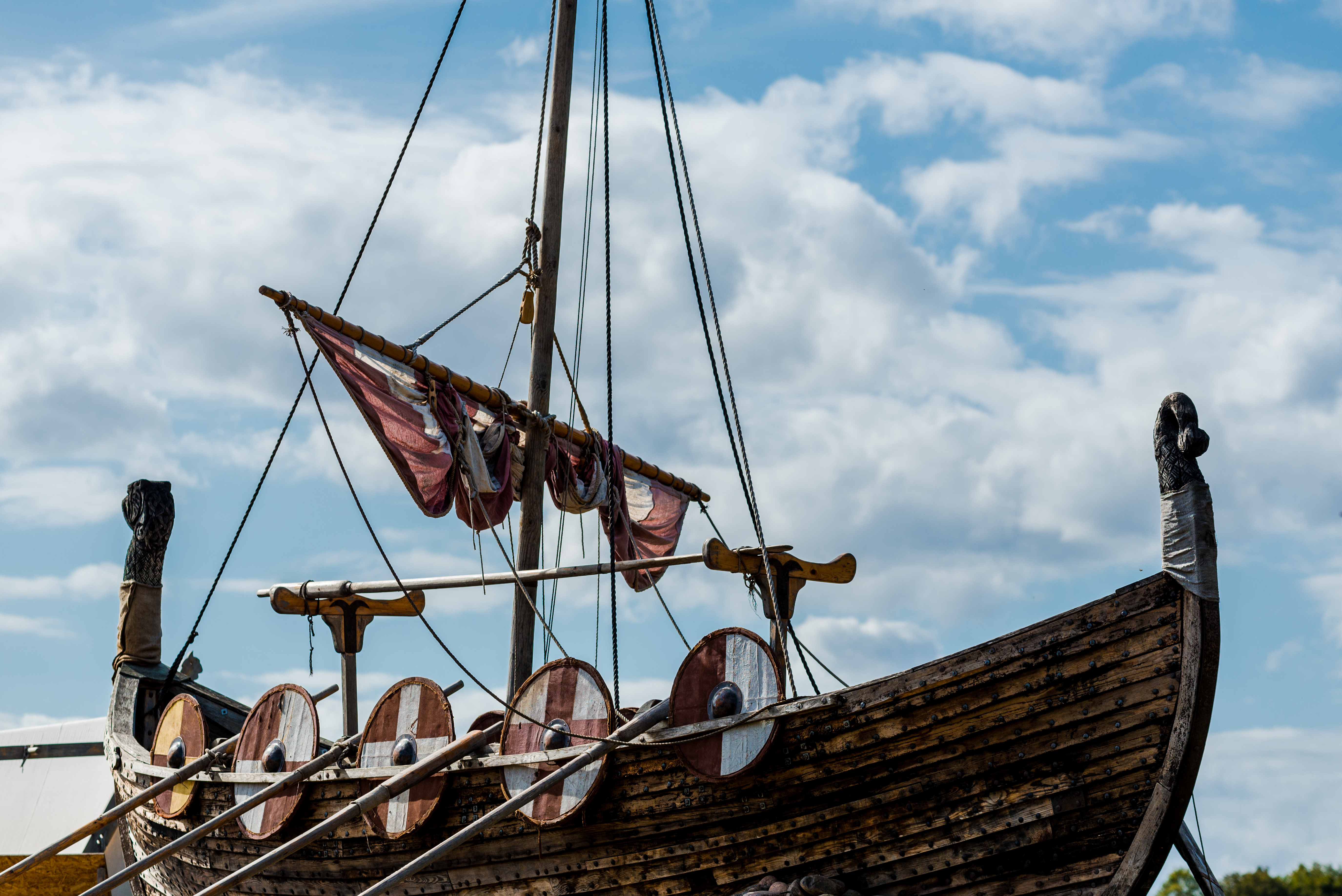
In his book Viking Weapons & Warfare, author John Kim Siddorn looks at Viking weapons from the perspective of a long time reenactor. Having used shields and spears which he built in a shield wall provides a different, and informed, view that is a delight to read.
Posts in this series:
- Spears, cost of iron
- Shields, armor
- Helmets, ships – the post you are currently reading
- Money
Helmet
Very few helmets have been recovered, which have led many to the inference that Vikings went into battle bare headed. His experience and logic suggest that could not possibly be the case.
Additional thought tells us that any leather head coverings would have long since rotted away. His suggestion why so few metal helmets have been found is that they were so incredibly expensive they were passed on from warrior to warrior until they rusted through and the iron repurposed.
He speculates a helmet might have had a cost equivalent to 5,300 British pounds today, or perhaps $7,500.
At that kind of a price, helmets would be passed on instead of buried. They would never be thrown away or left on the battlefield.
The rank-and-file would likely have gone into battle with a leather head covering.
Ships
Author spent a delightful 30 pages discussing ships and their construction, along with another 14 pages on sailing and life at sea.
The cost to build a warship was massive. It would be difficult to develop any kind of an estimate for comparable cost.
For just one aspect of the massive expense, consider his estimate that it would take approximately 1,575 pounds of iron nails to build a 50-foot ocean-going trading ship. Keep in mind this is when iron was as expensive to the Vikings as silver was in 2000.
At $5 an ounce for silver in 2000 and assuming the pounds of nails are measured in avoirdupois instead of Troy, that would be something in the range of $125,000 of iron (1,575# x 16 oz/lb = 25,200 oz x $5/oz = $126,000).
He draws an analogy that building a trading ship, or a good-sized worship, would be roughly comparable to a wealthy person buying a private jet today. Picture a Lear or Gulfstream. There are quite a few billionaires and near-billionaires who have their own private jet. That is still rather rare.
Lots of great discussion on construction techniques.
Author speculates the trees were probably felled in October or November. Ships would be built over the winter for two reasons. First, the wood is green and therefore much easier to work. Second, all the men were at home since you cannot be out Aviking in the winter and there’s no farming work to be done.
Next post: Money